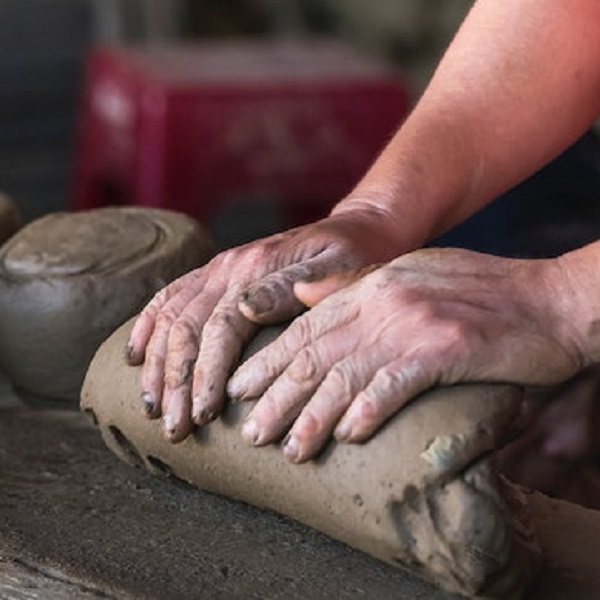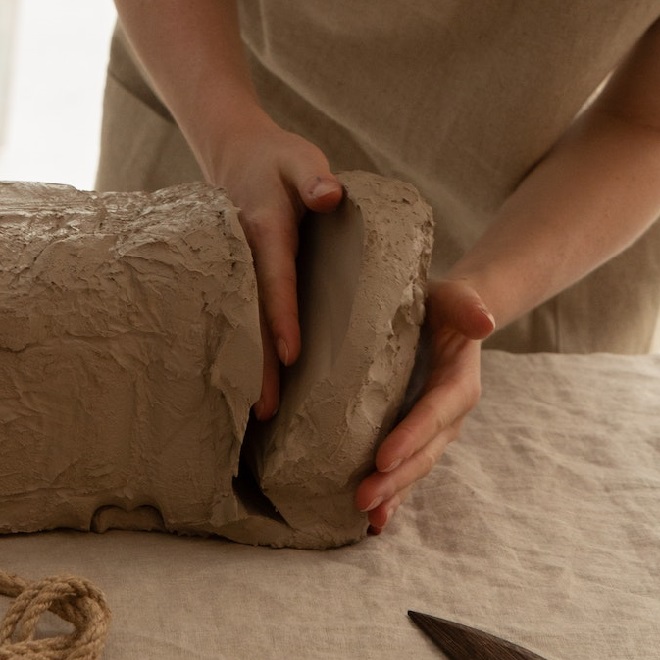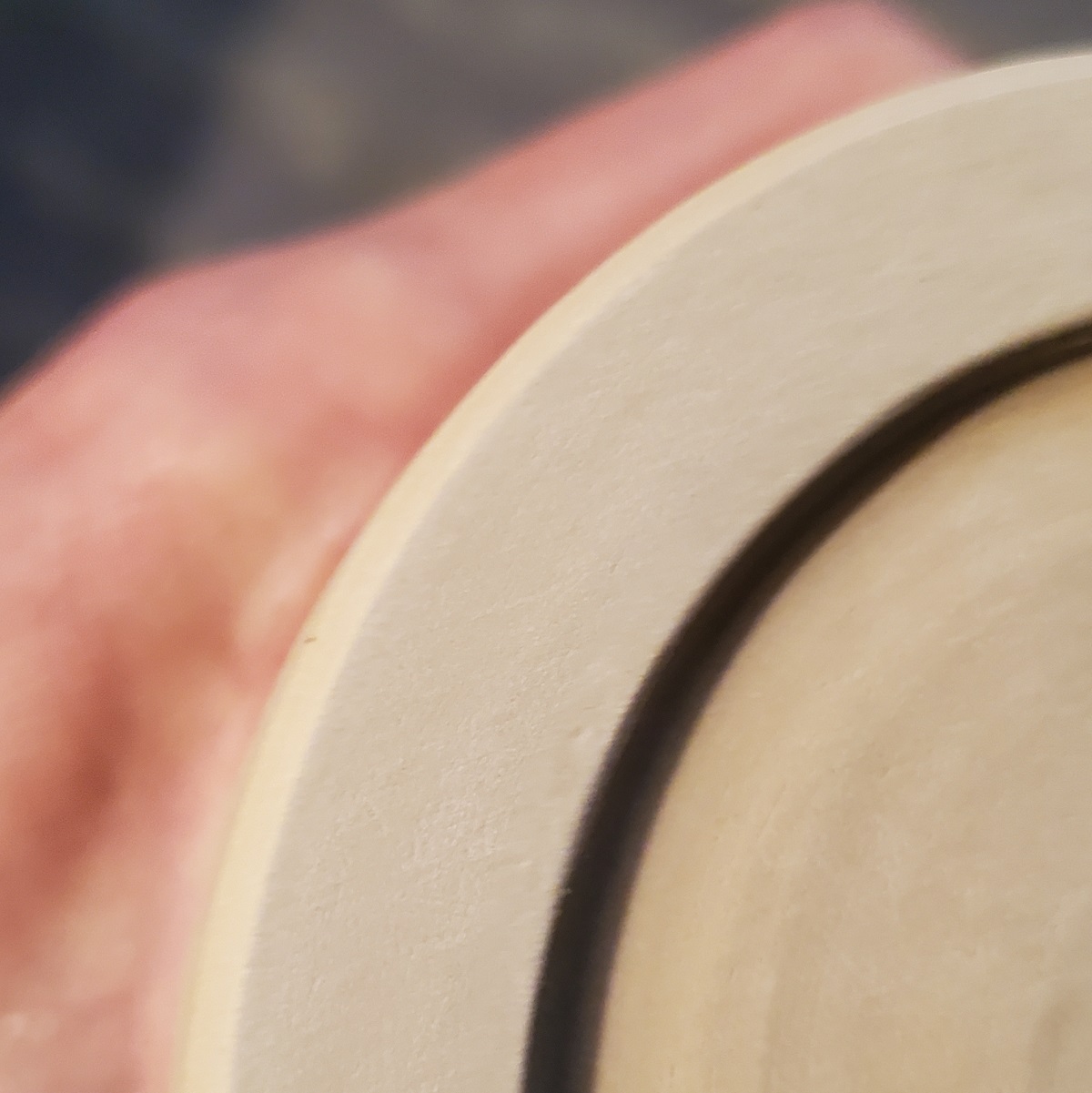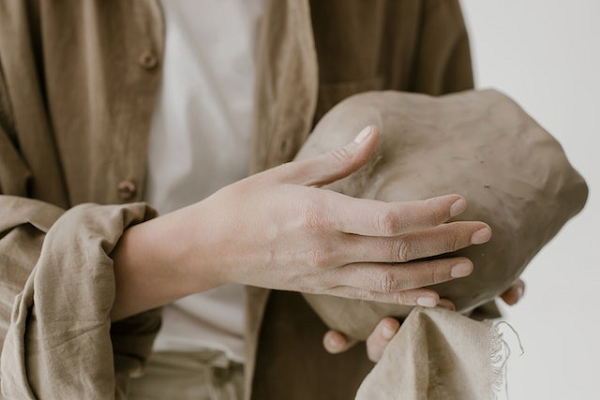
Asking ‘what’s the best clay for throwing?’ is a bit like asking ‘what’s the best flavor of ice cream?’… ask 3 different Potters, and you’re going to get 3 different answers. It certainly does depend on individual preferences, what types of clays you’re used to working with, and the specific types of projects and glazes you lean toward.
However, for throwing on the Potter’s Wheel, there are definitely some types of clays that are pleasing to the masses. This guide will help you make an informed decision about clay before you buy – and maybe you’ll discover a new favorite amongst my recommendations!
Confused about how to select the best clay for throwing / making pottery on the Potter’s Wheel? Well, you’re not alone… but once you get the hang of a few of the key things to look for, you’ll be able to narrow down your options with ease.
There are lots of things to consider when buying clay for Pottery, and you want to think through your decision before you buy. Not so much because of costs (clay isn’t terribly expensive), but more because you’re likely to be purchasing quantities of 25-50 lbs (minimum), so you don’t want to get stuck with big bags of clay that don’t tickle your fancy.
For anyone who hasn’t purchased their own clay before, the sheer number of options can be overwhelming. When you’ve been working in a school or studio setting (where they clay is generally provided for you), you might have established a good amount of experience on the Potter’s Wheel, without gathering any intel on the qualities of clay you should be considering.
Here’s some background before we jump into the various types of clay, for anyone who isn’t familiar with these terms.
Considerations when evaluating the best clay for throwing – key terms to know
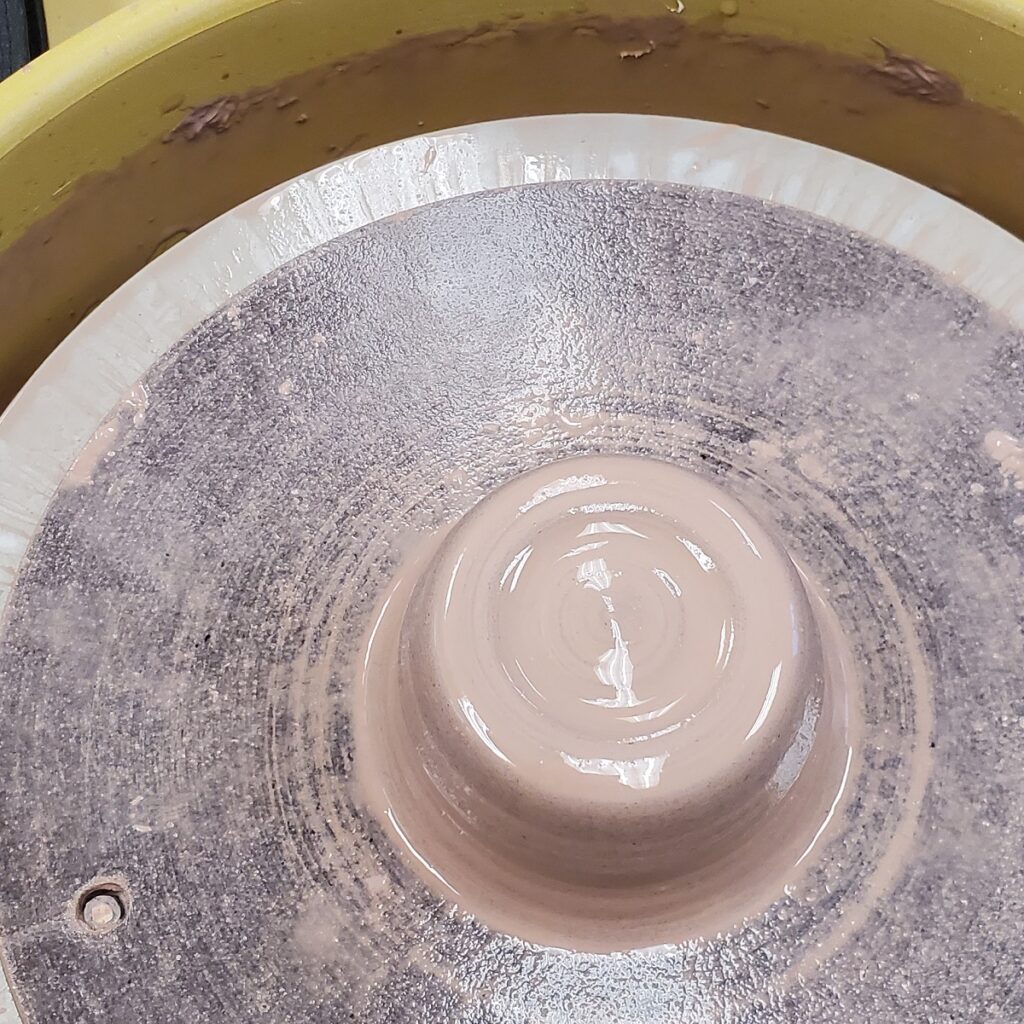
Grog – think of this as a bit of texture, that’s added to clay. Clay with added grog feels a bit sandy, for lack of a better word… though typically with very fine particles. For throwing on the pottery wheel, you won’t want anything with too much grog (or grog that’s too coarse), because it will tear up your hands in no time. Keep in mind that a bit of grog is useful for stability, and makes the clay a bit stronger, and less prone to cracking. Some of my very favorite clays to throw with include grog.
Shrinkage – when you fire your pieces, they don’t come out of the kiln the same size they started. This is something to take note of when selecting clay, as it refers to the amount (in % terms) of shrinkage to expect once your piece is fired. Many shrinkage rates tend toward a similar range (around 11-12% ), but there are definitely some outliers – so make sure you don’t overlook this aspect of clay selection.
Cone – this is the way Potters refer to firing temperatures. The ‘cone’ refers to the intended temperature range for firing. Clays specs include a cone range, so you know how to manage the firing process to achieve optimal results with a particular clay type.
Potters use pyrometric cones inside a kiln, which curl over at various temperatures – so they serve as a visual barometer of the temperature in the kiln.
To learn more Pottery Terms, visit this post!
Now that we have that out of the way, let’s dive into some high level clay types.
High level categories of Pottery clay (also called Clay Bodies)
There are 4 main categories of Clay Body when it comes to clay that you’ll use for Pottery.
Earthenware
Earthenware is a low-fire clay body, usually in the cone 3-6 range. This is the softest of the clay types we’re covering here, and is used extensively for things like brick making and tiles. This clay type can be a bit prone to breaking, as it’s generally porous and doesn’t get as hard after firing.
Because of it’s more porous and brittle qualities, typical projects on the pottery wheel that would be appropriate for earthenware clay are things like vases and decorative bowls that won’t see the clanking around of higher use items like bowls and mugs.
Mid Fire Stoneware
This clay body is probably what you’ll come across the most in the world of ceramic arts. Clays in this category are suited for many uses (hand and coil building, wheel throwing and some sculpture as well), so it’s versatile and fires in the mid range, temperature-wise. These clays usually fall into the range of cone 4 to cone 7.
High Fire Stoneware
As the name suggest, this is a high fire version of Stoneware, with a correspondingly higher cone than it’s mid-fire counterpart. High fire stoneware matures to a harder, more durable finish once fired. High fire stoneware is typically cone 8 to cone 10.
This is the type of clay body that is often used for pieces that require more durability. This would include higher use decoratives (like utensil holders), as well as general tableware, mugs, and functional pieces like casserole dishes. The harder and more durable properties make this a great clay body for a vast array of projects.
Porcelain
This is a high fire clay body, and matures to the hardest finish of the clay bodies we’ve covered here. It’s also on the more expensive / more finicky end of clay types. While it’s uses are similar to those in the High Fire Stoneware category, porcelain clay can be more difficult to work with and less forgiving. It can be prone to cracking if it is dried to quickly, and it’s just generally not as forgiving to the Potter.
For these reasons, as a general rule, Potters tend not to use porcelain clay bodies very extensively until they are more experienced Potters. All that said, Porcelain clay is buttery soft, and lovely to work with on the Pottery Wheel – and it also takes glazes very nicely, so depending on your preferences and experience, it can be a great option!
The Unspoken Progression of Clay Types: What Types Of Clay Should A Potter Be Using, Based On Their Level Of Experience?
There is a bit of an unspoken progression of clay types that many Potters will work they way through, starting from beginner status. At this end of the spectrum, there is a lot of learning, and a lot of waste. For that reason, recycled clay is what many Potters first experiment with, and work with the most when they’re just getting started.
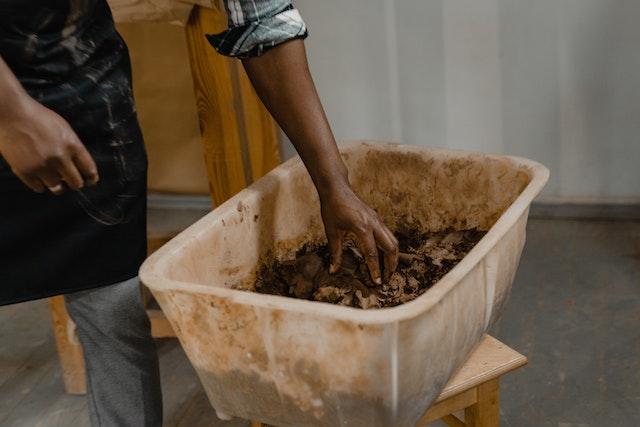
Just as it sounds, recycled clay is made from broken pottery, (greenware), that is re-hydrated and worked over into clay again through a series of processing steps. This process generally requires a fair amount of time and processing with larger machinery (like a pug mill), so you’ll most commonly find Recycled Clay in a school or community studio type settings where many Potters are just starting out.
Starting with the beginner-stage of using Recycled Clay, a Potter’s experimentation with different Clay Bodies (the unspoken progression I’ve noticed) might look loosely like this:
Recycled Clay — B-Mix w/grog — Speckled Buffs — Redstone Types — B-Mix w/out grog — Greys/Whites — Porcelains
Putting it all together – Selecting the best clay for throwing
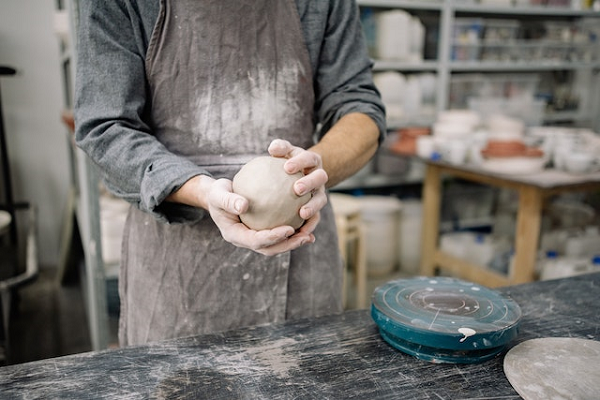
So now that we’ve considered the high-level categories of Clay, the best uses for each, the cone rage and durability factors to consider in terms of which clays are most suitable for which uses… we hope we’ve started to help you narrow down the clay types you might be interested in trying.
You might even take the unspoken progression into account, if you care about such things.
In the summary tables below, I’ve recommended my top picks. These are 7 great clays, and you really can’t go wrong with any of them (outside of the normal temp and glaze considerations that go along with every project.
I hope it’s helpful for those who need some help with your selection process). If you try any of these, I hope you’ll let me know what you think in the comments section!
This page uses affiliate links. When you shop using links on this site, we may earn a commission. As an Amazon Associate, I earn from qualifying purchases.
It goes without saying that it’s ideal to purchase supplies from your local Pottery Supply Store (if you have one near you)… but that’s not always possible (or convenient) for everyone. In the event that you need to order your clay online, I’ve linked a reliable online supplier for each Clay Type I’ve recommended. Note: pay special attention to whether the retailer offers free shipping, or if they tack on carrier fees for orders over a certain number of pounds.
Best Clay For Throwing On The Potter’s Wheel – 7 Great Options
Blick Red Earthenware
Low-Fire
- Versatile
- Shrinkage at cone 06: 11.75
- Good for wheel throwing or hand building
- Retains red color after firing
Standard Ceramic 105 White w/ Grog
Low-Fire
- Not prone to cracking
- Shrinkage at cone 06: 5% d
- White firing earthenware
- Suitable for throwing or hand building
Laguna Speckled Buff
Mid Fire
- Smooth texture, earth tones
- Shrinkage at cone 5 is 12%
- Excellent for throwing
- Keep specks in mind for glaze selection
Rocky Mtn. Clay Best Mix BMix w/ Grog
Mid-Fire
- Versatile and economical for
- Shrinkage at cone 6 is 12.5%
- Fires to a lovely white or light gray
- Throwing or hand building
Standard Ceramic 553 Warm Buff Stoneware
Mid-Fire
- All purpose clay with fine grog
- Shrinkage avg. at cone 6 is 10.5%
- Suiteable for larger pieces on the Potter’s Wheel
Amaco #11 A-Mix White Stoneware
High-Fire
- Notably strong as greenware, fires strong as well
- Shrinkage is avg. 11.2% at cone 5
- Low risk for glaze interactions due to low iron content
Standard Ceramic 213 Porcelain Clay
High-Fire
- Plastic and throwable, notably smooth
- Shrinkage is 12% at cone 6
- White clay body takes glaze very nicely
I hope you try and enjoy my recommendations. It’s my aim to help Potters succeed in the studio, so I don’t think you can go wrong with any of the above – but I’d love to hear your feedback if you try any of these clays. Let me know how you like them in the comments section and speak up, also, if you have a favorite that we missed!

